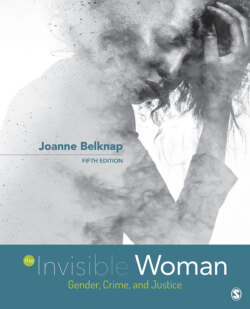Читать книгу The Invisible Woman - Joanne Belknap - Страница 70
The Roles of Gender Regarding Co-Offenders, Age, Race, Class, Sexuality, and Mental Illness
ОглавлениеChapters 2 and 3 pointed out how many criminological theories have tended to ignore women and girls or have viewed them through a stereotypical lens that usually distorts their real-life experiences (particularly abuse victimization). Any analysis of gender must avoid a similarly restricted view by accounting for differences among women and girls based on their age, race and ethnicity, social class, sexuality, nationality/citizenship (and immigration status), religion, disability status, and other factors. As noted already, the main source for measuring U.S. crime rates, the UCR, is limited for a variety of reasons, such as they only report on offenses that were reported to the police and where arrests were made. Additionally, they report no information on class or socioeconomic status, and although this has improved some, the information they report on sex, race, and age is done so in a manner that too often makes it impossible to determine the intersection of these variables, such as race × sex, or race × sex × age. Also, it is important to keep in mind that officially collected crime data (e.g., the UCR) are likely a better indicator of those individuals detained by the police and formally processed by the system than of actual offending, given that the majority of crimes are not reported to the police and, of those reported, the police do not always “solve” them. This section analyzes some of the important variables and characteristics often related to actual offending and/or how offending is perceived.
